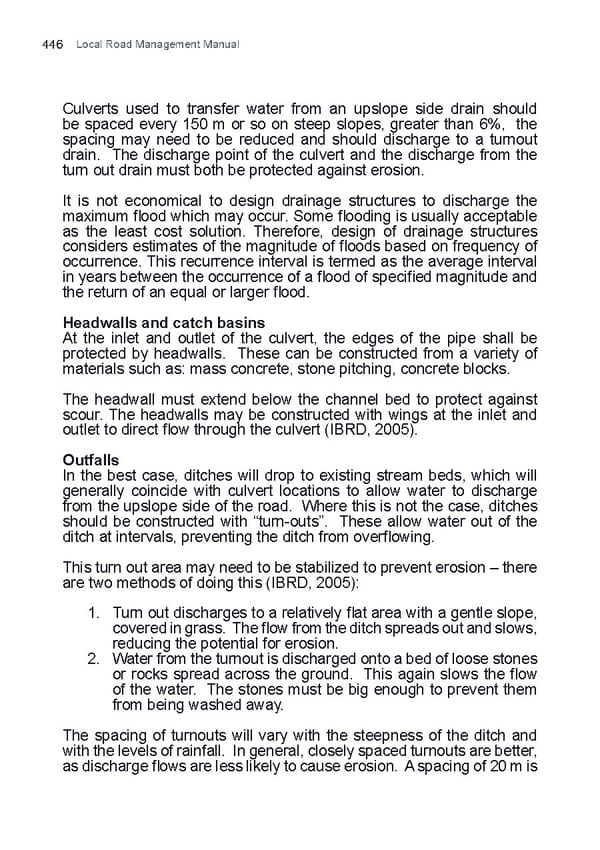Local Road Management Manual 446 Culverts used to transfer water from an upslope side drain should be spaced every 150 m or so on steep slopes, greater than 6%, the spacing may need to be reduced and should discharge to a turnout drain. The discharge point of the culvert and the discharge from the turn out drain must both be protected against erosion. It is not economical to design drainage structures to discharge the maximum flood which may occur. Some flooding is usually acceptable as the least cost solution. Therefore, design of drainage structures considers estimates of the magnitude of floods based on frequency of occurrence. This recurrence interval is termed as the average interval in years between the occurrence of a flood of specified magnitude and the return of an equal or larger flood. Headwalls and catch basins At the inlet and outlet of the culvert, the edges of the pipe shall be protected by headwalls. These can be constructed from a variety of materials such as: mass concrete, stone pitching, concrete blocks. The headwall must extend below the channel bed to protect against scour. The headwalls may be constructed with wings at the inlet and outlet to direct flow through the culvert (IBRD, 2005). Outfalls In the best case, ditches will drop to existing stream beds, which will generally coincide with culvert locations to allow water to discharge from the upslope side of the road. Where this is not the case, ditches should be constructed with “turn-outs”. These allow water out of the ditch at intervals, preventing the ditch from overflowing. This turn out area may need to be stabilized to prevent erosion – there are two methods of doing this (IBRD, 2005): 1. Turn out discharges to a relatively flat area with a gentle slope, covered in grass. The flow from the ditch spreads out and slows, reducing the potential for erosion. 2. Water from the turnout is discharged onto a bed of loose stones or rocks spread across the ground. This again slows the flow of the water. The stones must be big enough to prevent them from being washed away. The spacing of turnouts will vary with the steepness of the ditch and with the levels of rainfall. In general, closely spaced turnouts are better, as discharge flows are less likely to cause erosion. A spacing of 20 m is
 Local Road Management Manual Page 446 Page 448
Local Road Management Manual Page 446 Page 448